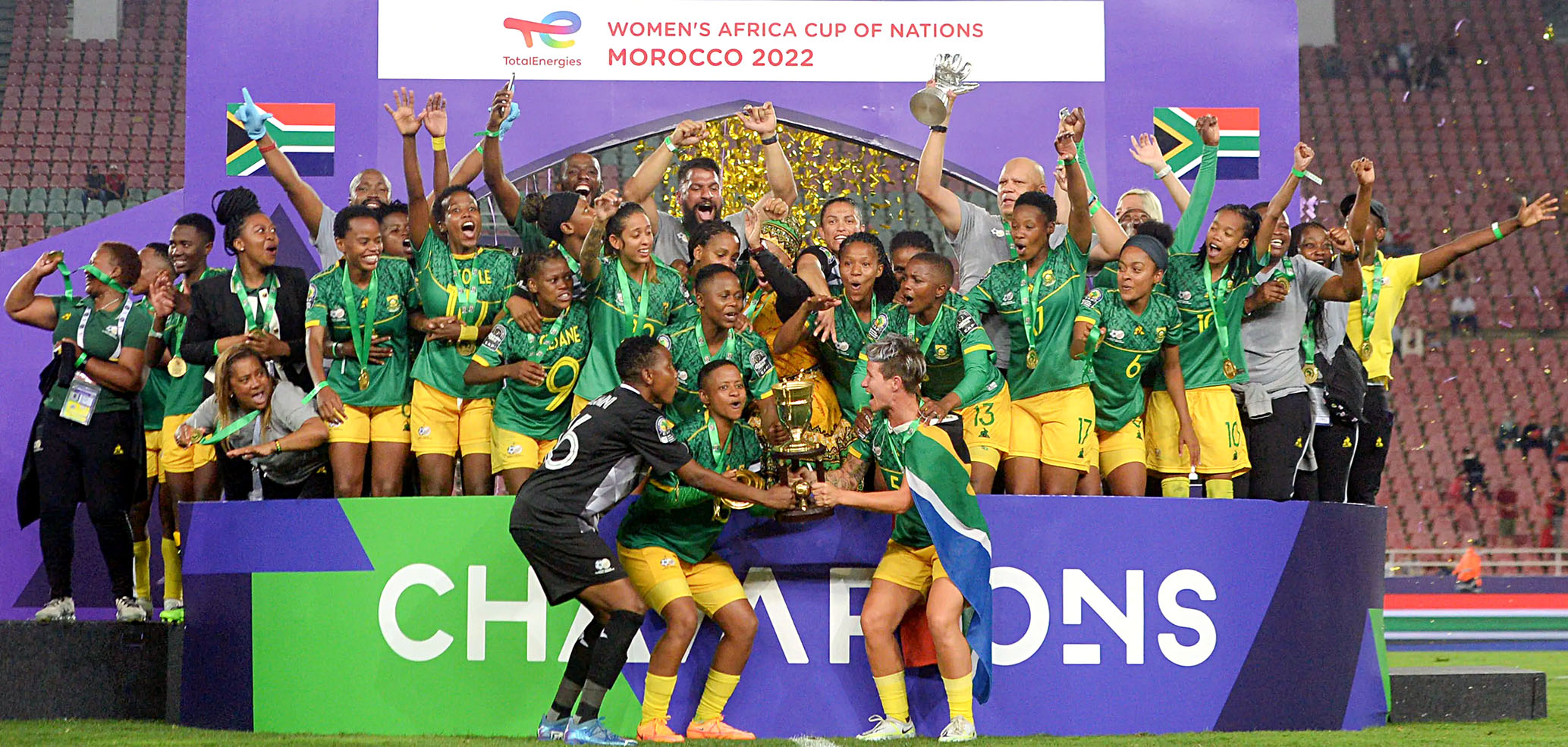Bit by bit, women’s soccer keeps on edging closer to a time where it can become a self-sufficient, self-sustaining entity in the sports realm. With the general public still mostly indifferent at regional level, one of the best advertisements for the women’s game is international tournaments.
In 2025, there will be some major tournaments that will once again cast the spotlight on women’s soccer. These include the Women’s Africa Cup of Nations (Wafcon), in which Banyana Banyana are the defending champions after their maiden African conquest in 2022.
Also taking place in 2025 is the European Women’s Championship. In that, England are the defending champions after also clinching their maiden continental title.
In South America, countries will challenge Brazil — who have been a dominant force in the Copa America, clinching eight of the nine continental titles to date. Only Argentina disrupted the dominance of the Brazilians when they were crowned Copa champions in 2006.
Rare platform
These continental contests will be important because they will not only display the progress that has been made by each participating nation, but will also offer players a rare platform on which to truly display their skills to a global audience, with hopes that they can earn life-changing opportunities as a result.
A number of European players already have access to such opportunities, with strong domestic leagues set up in most of Europe. This is particularly true of England and Spain — whose league quality has helped propel them to Euro and Fifa World Cup success respectively.
In the past, domestic league strength was crucial for the likes of record world champions the US; as well as Germany, France and Sweden as they flew the women’s soccer flag high. But in Africa, it’s been a different story.
Powerful performances from national teams in Africa have depended on exporting their players to these aforementioned countries for development. Due to a contrast in resources, as well as a lack of commitment from those who are in power, Africa still depends on this strategy as many locally based soccer stars juggle soccer with full-time jobs.
“It’s not just a South African problem. It’s an African problem. We have to have professional leagues in each country to elevate the level of football. That will help us compete with the rest of the world,” said former Banyana Banyana captain Simphiwe Dludlu.
 Sarina Wiegman, the head coach/manager of England. (Photo: Robbie Jay Barratt / AMA / Getty Images)
Sarina Wiegman, the head coach/manager of England. (Photo: Robbie Jay Barratt / AMA / Getty Images)
 England players celebrate their 2-1 win in the Uefa Women's Euro 2022 final match against Germany at Wembley Stadium on 31 July 2022 in London. (Photo: Naomi Baker / Getty Images)
England players celebrate their 2-1 win in the Uefa Women's Euro 2022 final match against Germany at Wembley Stadium on 31 July 2022 in London. (Photo: Naomi Baker / Getty Images)
When African teams compete internationally, this gap becomes especially apparent — although Banyana Banyana defied the odds by reaching the round of 16 at the previous World Cup, which took place two years ago. They did so despite some boardroom members at the South African Football Association (Safa) not showing faith in the team’s quality.
This may explain why, almost six years after it was launched, the Hollywoodbets Super League is still struggling to produce players who are not overawed when they are called up to Banyana Banyana.
“The girls playing in the Hollywoodbets Super League — how many of them have contracts? You have to have a contract in order to be paid,” said Banyana veteran Thembi Kgatlana following the team’s Wafcon success.
“A lot of these girls are discouraged. They have to choose between going to school and work, or playing football,” Kgatlana said.
A grassroots problem
Of course, this is also a grassroots problem. In 2020 England’s Football Association (FA) said it had set a target of 75% equal access to soccer in schools by 2024. It achieved this mark in 2023, with about 77% of schools in the country offering girls’ soccer by the end of last year. Winning the 2021 Euros under coach Sarina Wiegman played a major part in this.
“It is remarkable what has been achieved in just four years across all levels, with more women and girls stepping forward to play, coach, officiate and participate as fans. But there is still more work to be done for the sport to reach the heights we know it can grow to,” said Sue Campbell, the FA’s director of women’s soccer.
By the end of these continental contestants scheduled for 2025, hopefully there will be more substantial growth in the women’s game. As for England, Banyana Banyana and Brazil — they will hopefully face tough challenges in defence of their continental crowns, which will be a great advert for women’s soccer. DM




 England players celebrate their 2-1 win during the UEFA Women's Euro 2022 final match between England and Germany at Wembley Stadium on July 31, 2022 in London, England. (Photo by Naomi Baker/Getty Images)
England players celebrate their 2-1 win during the UEFA Women's Euro 2022 final match between England and Germany at Wembley Stadium on July 31, 2022 in London, England. (Photo by Naomi Baker/Getty Images) 